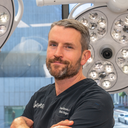Posted underBreast Lift q&a
5 years post op -r eally bad scarring and extremely high upwards pointing nipples. How can I fix my botched breast lift? PhotosP
I am F29, 5'3. I had a breast lift 5 years ago with terrible results, really bad scarring and extremely high upwards pointing nipples. I have been advised by a couple of surgeons that the nipples cannot be moved down and only a incision under the breast can be made. crescent. Due to the length from the collarbone to the my nipple. I am desperate to have them moved down even slightly, even if this means there is a scar that needs addressing on top. Is there anyone that could help in any way?
Answers (15)
From board-certified doctors and trusted medical professionals
Dr. Donovan Rosas, MD

Dr. Donovan Rosas, MD
Board Certified Plastic Surgeon
Answer
Dr. Joel Patrick Maier, MD

Dr. Joel Patrick Maier, MD
Board Certified Plastic Surgeon
Answer
Answered on Jul 18, 2025
Answer
Answered on Jul 1, 2025
Answer
Dr. Benjamin Baker, BMBS MBA FRCS(Plast)

Dr. Benjamin Baker, BMBS MBA FRCS(Plast)
Specialist Registered Plastic Surgeon
Answer
Dr. Daniel Barrett, MD

Dr. Daniel Barrett, MD
Board Certified Plastic Surgeon
Answer
Dr. Raffy Karamanoukian, MD, FACS

Dr. Raffy Karamanoukian, MD, FACS
Board Certified Plastic Surgeon
Answer
Dr. Jeffrey M. Darrow, MD

Dr. Jeffrey M. Darrow, MD
Board Certified Plastic Surgeon
Answer
Dr. Warren Schutte, MD

Dr. Warren Schutte, MD
Board Certified Plastic Surgeon
Answer
Dr. Gary M. Horndeski, MD

Dr. Gary M. Horndeski, MD
Board Certified Plastic Surgeon
Answer
More Breast Lift Questions
See all Breast Lift Q&AWE SEND PRETTY
EMAILS
What’s trending? Who’s turning heads? Which TikTok myths need busting? We’ve got you. No fluff, no gatekeeping—just real talk. Get our free, unfiltered newsletter.

